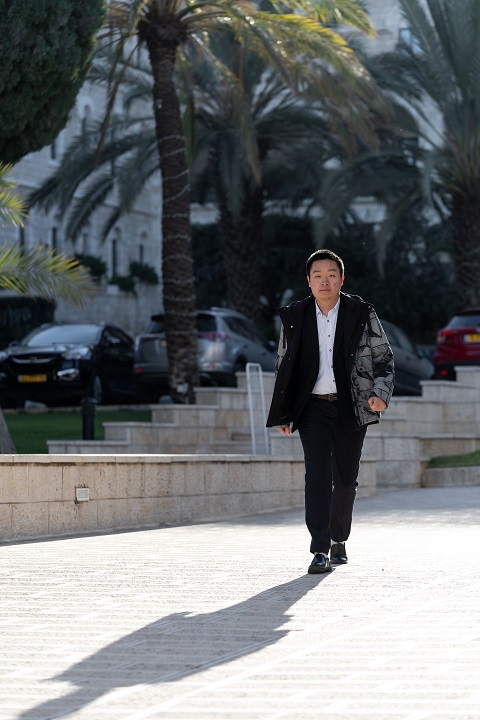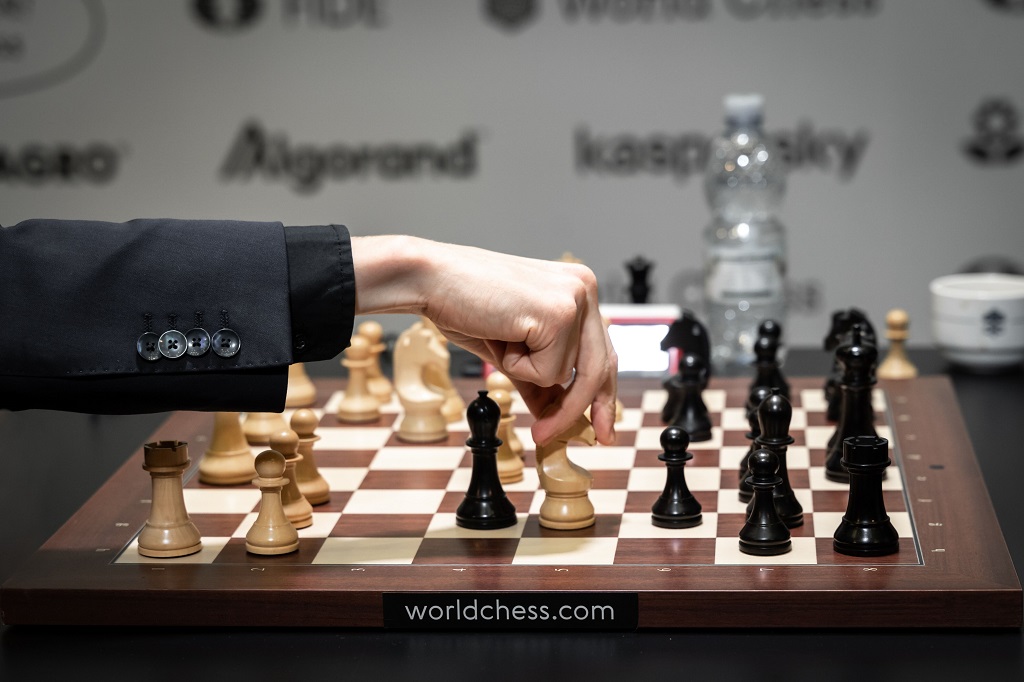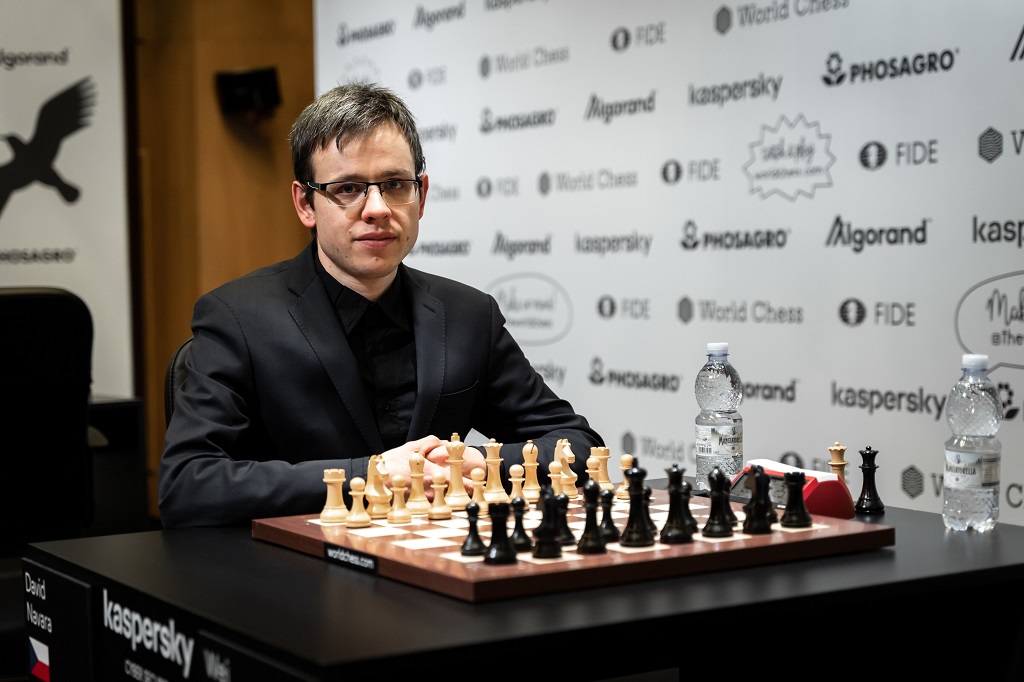


 The fourth leg of the FIDE Grand Prix is being played in Jerusalem, Israel. The 16-player knockout has a €130,000 prize fund, with the series as a whole having an additional prize fund of €280,000 plus two qualifying spots for the 2020 Candidates Tournament. The tournament takes place in the Notre Dame of Jerusalem Centre from December 11th to 23rd.
The fourth leg of the FIDE Grand Prix is being played in Jerusalem, Israel. The 16-player knockout has a €130,000 prize fund, with the series as a whole having an additional prize fund of €280,000 plus two qualifying spots for the 2020 Candidates Tournament. The tournament takes place in the Notre Dame of Jerusalem Centre from December 11th to 23rd.
 French fans will be rooting for Wei Yi starting Saturday as the final of the Grand Prix in Jerusalem will decide whether Maxime Vachier-Lagrave qualifies to the Candidates or not. This is the final hope for 'MVL', who will not be getting the wildcard spot, which is reserved for a Russian player — the host federation announced they will award the ticket to a national representative.
French fans will be rooting for Wei Yi starting Saturday as the final of the Grand Prix in Jerusalem will decide whether Maxime Vachier-Lagrave qualifies to the Candidates or not. This is the final hope for 'MVL', who will not be getting the wildcard spot, which is reserved for a Russian player — the host federation announced they will award the ticket to a national representative.
For Ian Nepomniachtchi, on the other hand, beating Wei Yi is not a must, as he will most likely face Kirill Alekseenko in a match to get in as the wildcard if he ends up losing the final — Alekseenko became an eligible player due to his good performance on the Isle of Man.
Although Nepomniachtchi is the rating favourite against Wei Yi, the 20-year-old from Yancheng should not be underestimated. He is not one to shy away from sharp fights — moreover, he is highly dangerous when dealing with complications — and, as proven throughout the event in Israel, he can also handle long struggles in queenless positions. The Chinese prodigy eliminated long-time members of the elite Anish Giri and Sergey Karjakin in the first two rounds.
The final kicks off Saturday after the one scheduled rest day of the tournament. The format used in previous rounds is maintained: two classical games followed by rapid and, if necessary, blitz tiebreakers.
For a third game in a row, the contenders continued playing until lone kings stood on the board. Their first rapid encounter lasted 91 moves and over an hour and twenty minutes — in a game with a 25'+10" time control. They entered a queenless middlegame in which White had an extra pawn, but also the less active pieces.
Here White could have eased his defensive task with 26.e5 ♞xe5 27.♘xe5 ♝xe5 28.♖xd6 ♝xd6 29.a4, when the reduced material means Black does not have as many chances to complicate matters. Instead, Navara went for 26.b4, and after 26...♞xa3 27.♖b3 there followed 27...♞c1, keeping Black's initiative.
With the pawn structures mostly kept untouched, a battle of manoeuvres ensued. Soon enough, it was White who gave up a pawn, and Wei Yi started to look for ways to break Navara's stubborn defence. On move 53, the Chinese decided he needed to open up the position a bit:
There followed 53...d5+ 54.exd5+ ♞xd5 55.♘c5+ ♚d6 56.♘xa6 and the material balance had been restored. Nevertheless, White's pieces were not quite centralized...
Black used his better-placed pieces to gain the h-pawn, but when the minor pieces left the board a rook endgame with 3 v 2 meant Black had little to no chances to win the game against a player of Navara's calibre. The Czech grandmaster showed the appropriate defensive technique to get the draw.

David Navara playing 9.♘g5 during game one | Photo: Niki Riga
Wei Yi decided to avoid long theoretical lines by using a hypermodern approach with the white pieces (he played 1.♘f3, 2.b3, 3.♗b2, 4.d3, 5.♘bd2, 6.g3), following lines previously employed by the likes of Richard Rapport or Alexander Grischuk. Navara did not react befittingly and was already on the back foot by move 10:
Commentator Evgeny Miroshnichenko had been pointing out repeatedly that perhaps Navara's strategical inaccuracy in the early opening was to both put his light-squared bishop on the h7-b1 diagonal and play ...c5 — it would be better to either have a pawn on c6 or keep the bishop on c8. This resulted in Black having to opt for the awkward 10...♛d8 in the diagrammed position.
Better options were 10...♝e7 or 10...d4, but it is hard to blame Navara for not choosing these alternatives, as they both were big strategical concessions. After 10...♝e7, White has 11.e5 and there is nothing better than 11...♞g8, while after 10...d4 White would play 11.f4 and Black's pieces have little mobility.
Wei Yi immediately opened up the centre, looking for ways to punish his opponent's mistakes. Navara was not able to castle and had to compromise his kingside pawn structure. By move 17, White already had a strong tactical shot at hand:
There followed 17.♖xe6 ♛xe6 18.♗xd5 ♛d7 19.♗xf7, and the vulnerable black king had to escape to d8. Black's position was in tatters and Wei Yi needed ten more moves to force his opponent to resign.
The four-game face-off was an illustration of how a direct match can show fighting chess from start to finish. Wei Yi is definitely a worthy challenger for the title. And kudos to Navara, for his valiant play throughout the event.

Navara gained four Grand Prix points in Jerusalem | Photo: Niki Riga
Official broadcast with GM Evgeny Miroshnichenko via worldchess.com
Previous reports: